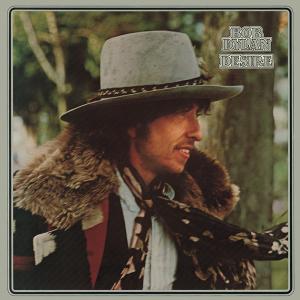
Desire (1976)

1. Hurricane
2. Isis
3. Mozambique
4. One More Cup of Coffee (Valley Below)
5. Oh, Sister
6. Joey
7. Romance in Durango
8. Black Diamond Bay
9. Sara
By the mid-1970s, Bob Dylan was once again in the public eye, riding the commercial and critical resurgence sparked by Blood on the Tracks. His popularity, long considered in decline during the early part of the decade, was abruptly rekindled. FM radio welcomed him back with open arms, and his records began moving in large quantities once more. Desire, released in 1976, was the culmination of that wave—a bold, sprawling effort that drew widespread attention upon release. And yet, in the years since, its place in the Dylan pantheon has grown less secure. For all its ambition, Desire reveals itself as both richly textured and frustratingly uneven.
Ever keen to shift musical identities, Dylan here enlists the Rolling Thunder Revue—a collective of collaborators that would lend this album its distinctive gypsy-folk vibrancy. The instrumentation is consistent, but the tonal variety across songs is vast. What ultimately binds the record is not style but texture, particularly the recurring presence of two figures: Scarlet Rivera’s exotic, flamenco-tinged violin and Emmylou Harris’s ethereal backing vocals. Both are fine musicians. Yet, paradoxically, both elements are mixed so prominently that they occasionally overpower the songs themselves. Rivera’s violin—present on nearly every track—becomes so ubiquitous as to border on intrusive, while Harris, despite her unmistakable grace, at times threatens to eclipse Dylan’s own voice.
The material itself is ambitious. No fewer than four tracks stretch past the seven-minute mark, and the album as a whole brushes the hour mark—a rarity for a single LP of the era. Its centerpiece, Hurricane, is one of Dylan’s most direct political statements, chronicling the controversial imprisonment of boxer Rubin Carter. Clocking in at over eight minutes, it is urgent, furious, and utterly unapologetic. Gone are the veils of metaphor; here, Dylan speaks with pointed clarity and righteous indignation. If nothing else, the track stands as proof that, when focused, Dylan could still deliver a knockout.
Elsewhere, the results are more mixed. Joey, a rambling and romanticized ballad of mobster Joey Gallo, stretches credibility—and patience. Though clearly intended as a tragic outlaw epic, its subject remains morally ambiguous at best, and the combination of Italian flourishes and Appalachian twang leaves it stylistically stranded. Isis, meanwhile, is a surreal, myth-inflected tale that resists clear interpretation. Musically, it is among the album’s most compelling, but its lyrical arc meanders too abstractly to fully satisfy.
The album’s quieter moments offer welcome relief. One More Cup of Coffee (Valley Below) and Oh, Sister stand apart for their emotional clarity and subdued arrangements. Here, Dylan pulls back the veil, trading narrative ambition for sentiment and reflection. These tracks, while still touched by the sonic fingerprints of Rivera and Harris, allow the songwriting itself to breathe.
Ultimately, Desire is a record of its time—lavish, fearless, and at times, excessive. It succeeds as a document of Dylan’s theatrical mid-’70s phase, capturing the energy of his Rolling Thunder persona in studio form. But viewed through a longer lens, the album appears less as a masterpiece and more as a fascinating overreach: passionate, uneven, and unmistakably Dylan.
Go back to the main page
Go To Next Review